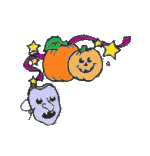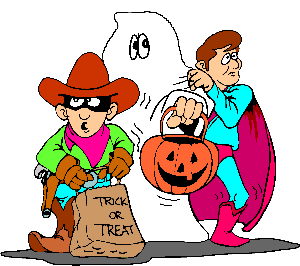 | Roman Influence
During
the Roman empire, two Halloween celebrations came into fruition. The
first was called Feralia, and was a day when the Romans remembered the
dead. The second celebration honored the Roman goddess Pomona, who was
symbolized by apples.
| |
Christian Influence
According
to historians, Christianity influenced Halloween during the 800s.
October 31st was named "All Hallow's Eve" during this time. Also, Pope
Boniface IV enacted All Saints' Day as the day after All Hallow's Eve.
November 1st was meant to be a day in which saints and martyrs were
honored.
| |
 | Early Colonial Influence
In
colonial America, Halloween was a day of fear for Protestants who
believed that ghosts and witches roamed the Earth. However, with the
rise of immigrants from other parts of Europe, Halloween evolved into a
day in which people dressed up and went around asking others for food,
or "treats". Pranks were also played. During the nineteenth and early
twentieth centuries, Halloween became a non-secular event based on
community gatherings where children and adults would dress up and play
games. Trick-or-treating also played a prominent role, but was used by
children to receive candy from neighbors instead of adults asking for
food.
| |
Final Thoughts
Historians estimate
that Americans spend nearly $7 billion a year on Halloween. This
includes costumes, parties, and treats. Halloween is not celebrated by
all, as some still practice the belief that it is a designated day for
the dead. Still, Halloween is prevalent in American culture and is taken
much light-heartedly than did ancient peoples of the world. Other
countries that celebrate Halloween include the United Kingdom, Ireland,
Puerto Rico, Canada, New Zealand, and Australia.
| |
|
Story courtesy www.suite101.com/content/halloween-history-a163587#ixzz13xtK6k3c | |